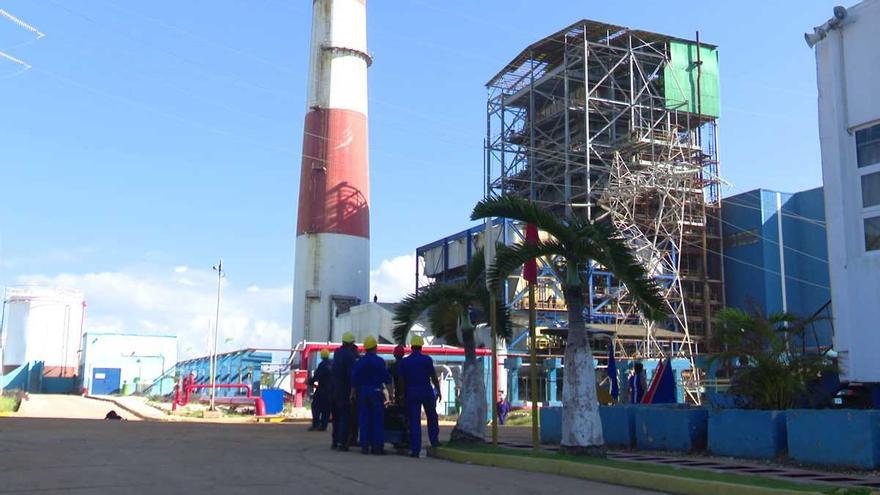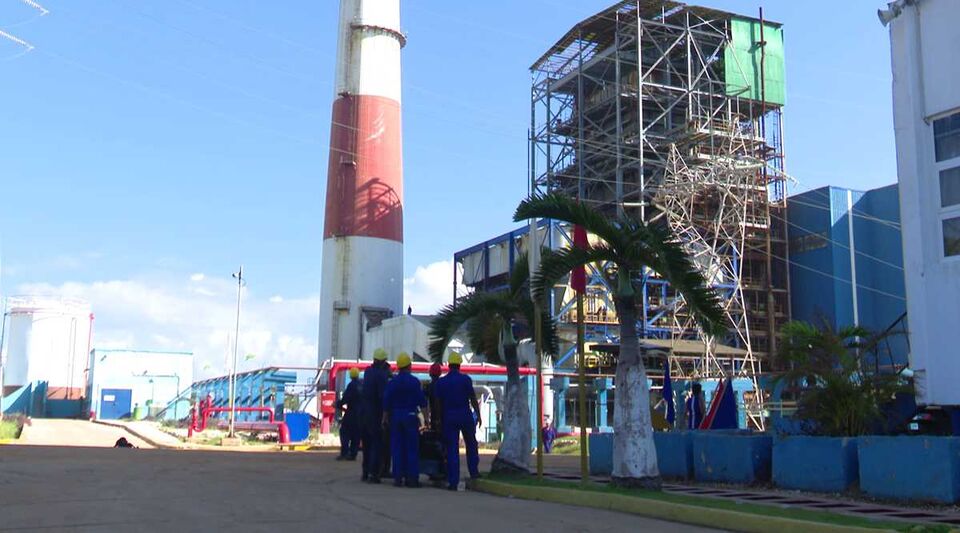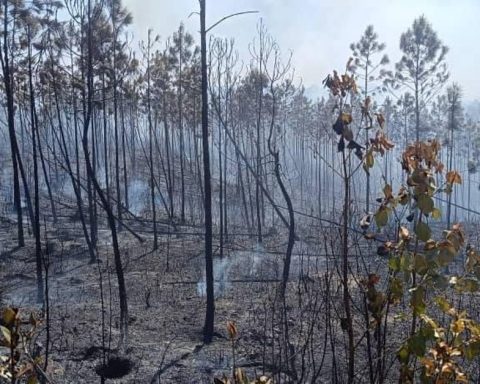
The Antonio Guiteras Thermoelectric Plant in Matanzas, the largest Cuban plant, is not raising its head. After the most recent failure, last Saturday, which again motivated its exit from the national electrical system, the engineers tried to connect it this Tuesday, but the hydraulic test carried out “showed problems” that prevented it.
The general director of the plant, Misbel Palmero Aguilar, said that the “difficulties that have arisen in the last few hours make it necessary to use lifting equipment to be able to ascend to a height of 24 meters, where the breakdowns related to the boiler furnace are found,” According to the official newspaper of the province, Giron.
The engineer maintained that work would be carried out throughout this Tuesday so that the thermoelectric plant returns to the system before the peak hours of this Wednesday, although the spirits do not exactly spread among the population, which has expressed its displeasure on social networks from Gironsince they doubt that, if the repair goes ahead as soon as possible, a problem will not occur again in the very short term.
“But I understood that the thermoelectric plant was repaired a month or so ago, that there is a solution to demolish it and throw it into the sea”
“And within a week it breaks again,” one user lamented. “But I had understood that the thermoelectric plant was repaired a month or so ago, that has a solution to demolish it and throw it into the sea,” alleged another.
The Antonio Guiteras thermoelectric plant, in addition to being the largest electricity producer in Cuba, is considered by the authorities to be “the most efficient.” On March 17, the plant announced that it would be paralyzed for six days due to a “unexpected” failure, which was attributed to a leak in the unit’s boiler. This not only affected generation capacity but was also decisive for the drop in reserves.
At that time, I had also just logged out of the system for a March 7 fire at the Máximo Gómez thermoelectric plant, from Mariel, in Artemisa. The authorities then rushed to regulate the sale of fuel, necessary to feed the generator sets and guarantee public transport. This caused a peak in demand among users, alarmed by a possible new gasoline crisis, which generated queues of up to 8 hours in the Cuban capital to get as many reserves as possible.
Solved these problems, in a partial way as always, breakdowns occurred in early april in the thermoelectric plants of Felton, in Holguín, and Diez de Octubre in Nuevitas, Camagüey
“Soon another one will come out of circulation, in the summer they can’t stand it, they are all old with rouge,” said a user last night
“Soon another one will come out of circulation, in the summer they can’t stand it, they are all old with rouge,” said a user last night in the publication of Giron, chastened by the constant entry and exit of plants in the system and the constant blackouts. Many commenters warned that they had been without power for more than 10 hours.
With summer at the gates, the population fears more months of intense heat with limitations in electrical current, essential for air conditioning to help alleviate high temperatures. These shortcomings, together with those of food and sanitary conditions, fueled the claims of many Cubans who, also tired of the lack of freedoms, took to the streets on July 11, 2021 in the largest anti-government protests on the island in decades.
In September, the National Electric Union attributed the electrical problem in Cuba to the lack of execution of maintenance programs, something essential in such an obsolete system. In an extensive article published by the official press, the electricity monopoly explained that of the 19 generation units in the country, 16 work “outside their maintenance cycles”, 10 blocks have been in operation for more than 30 years, 7 exceed 40 and only two have less than 25. All the plants begin to exceed, when they do not exceed it, the useful life of one of these plants, between 30 and 35 years.
________________________
Collaborate with our work:
The team of 14ymedio is committed to doing serious journalism that reflects the reality of deep Cuba. Thank you for joining us on this long road. We invite you to continue supporting us, but this time becoming a member of our journal. Together we can continue transforming journalism in Cuba.


















